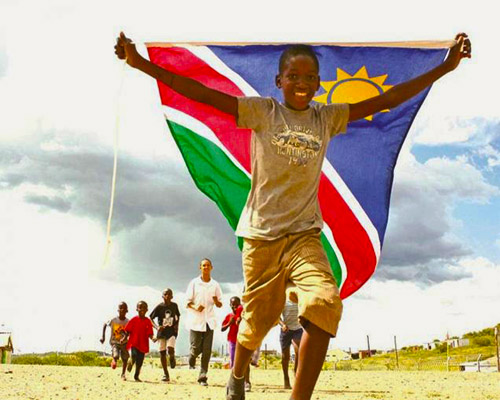The History of Namibia
Namibia’s Story, from Ancient Cultures to Independence
The path to independence that shaped this diverse and vibrant nation of Namibia

A Journey Through Namibia’s History. Namibia, located in southwestern Africa, boasts a rich and diverse history that spans thousands of years. From its earliest inhabitants to its struggle for independence, the nation's past is marked by resilience, cultural diversity, and a quest for self-determination.
Early Inhabitants and Indigenous Cultures. The earliest known inhabitants of Namibia were the San people, also known as Bushmen, who have lived in the region for thousands of years as nomadic hunter-gatherers. They are renowned for their intricate rock art, some of which dates back over 25,000 years. Around the 14th century, Bantu-speaking groups, including the Ovambo and Herero, migrated into Namibia from the north. They established agricultural communities and kingdoms, particularly in the northern regions.
European Contact and Colonization. Portuguese explorers, such as Diogo Cão and Bartolomeu Dias, were among the first Europeans to reach the Namibian coast in the late 15th century. However, sustained European interest in the region did not materialize until the 19th century. In 1884, Germany declared Namibia a protectorate, naming it German South West Africa. German colonial rule was marked by infrastructure development but also by brutal suppression of indigenous resistance. Between 1904 and 1908, the Herero and Namaqua genocide occurred, during which German forces killed tens of thousands of Herero and Nama people in what is considered one of the first genocides of the 20th century.
South African Administration and Apartheid. Following Germany's defeat in World War I, the League of Nations mandated South Africa to administer Namibia. South Africa imposed its apartheid policies on the territory, leading to widespread discrimination and disenfranchisement of the indigenous population. Resistance to South African rule grew over the decades, culminating in the formation of the South West Africa People's Organization (SWAPO) in 1960. SWAPO led a protracted struggle for independence, both diplomatically and through armed resistance
Path to Independence. International pressure and internal resistance eventually led to negotiations for Namibia's independence. In 1988, agreements were reached that paved the way for United Nations-supervised elections. On March 21, 1990, Namibia officially gained independence, with Sam Nujoma becoming its first president. Ndemupelila Netumbo Nandi-Ndaitwah is the fifth and first female president of Namibia sworn in on the 21 March 2025
Post-Independence Era. Since gaining independence, Namibia has established a stable multiparty democracy and has been recognized for its commitment to human rights and the rule of law. The country has made significant strides in education, infrastructure, and economic development, although challenges such as income inequality and unemployment persist.
Conclusion. Namibia's history is a testament to the resilience and determination of its people. From ancient rock art to the fight for independence, the nation's past continues to shape its identity and aspirations for the future.
Please contact us and we will arrange a dream safari for you to experience amazing Namibia
Other interesting articles about Namibia
